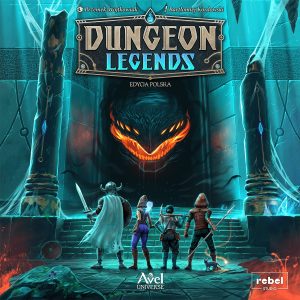 I don’t really like dungeons, or the crawling thereof. Broadly speaking, I find the process to be fiddly and component-reliant, with more time devoted to running the dungeon than playing your turn.
I don’t really like dungeons, or the crawling thereof. Broadly speaking, I find the process to be fiddly and component-reliant, with more time devoted to running the dungeon than playing your turn.
I also think the term “dungeon”, at least in board games, has become unhelpfully broad. The word has taken on a life of its own, to the point where the “dungeons” being crawled in board games more closely resemble scavenger hunts than actual dungeons, packed with hidden trinkets and treasures.
Dungeon Legends is not going to quell my irritation on that point—in fact, it features a whopping zero dungeons. That said, it’s also a lot more minimalistic than your typical dungeon game, and you don’t really crawl around in them. But is that enough to win me over?
Dungeon Legends is a cooperative tower-defense-ish card game for 1-4 players. It plays in around 45-90 minutes, and plays well at all player counts.
Gameplay Overview:
Dungeon Legends is loosely structured into a five-chapter campaign (although each chapter can be played on its own), and each scenario has the same basic setup. Players start out clustered around their castle, and over the course of the game, monsters will pop out and advance their way towards it. If even a single monster reaches the castle, players immediately lose the game.
Each player controls a hero, primarily represented by a deck of action cards. Cards can provide a variety of different actions, such as attacking the monster in your current space, moving to an adjacent space, or generating Dust. After your turn ends, you reveal a new card from the game deck, which can either alter the game state through one-off events or add new monsters to the track.
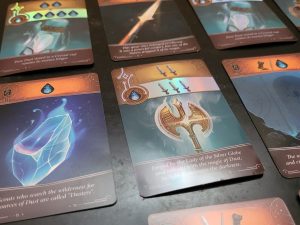
Monsters are defeated and discarded by dealing damage equal to their health. When that happens, the defeating player gets some reward–usually, a new advanced action card to add to their deck. These cards are much stronger than your starting cards and even have an extra-powerful action, which can be activated by spending Dust.
While killing monsters makes heroes stronger, it doesn’t do anything to win the game. Instead, each chapter has a unique objective tied to that chapter’s locations. Locations are randomized on the track during setup, and each has a unique action that heroes can take when at that location. Some provide additional attacks or power-ups, but some are used to progress in the scenario, like filling a bucket with water to put out a raging fire. Players win if they can achieve the chapter-specific objective before time runs out.
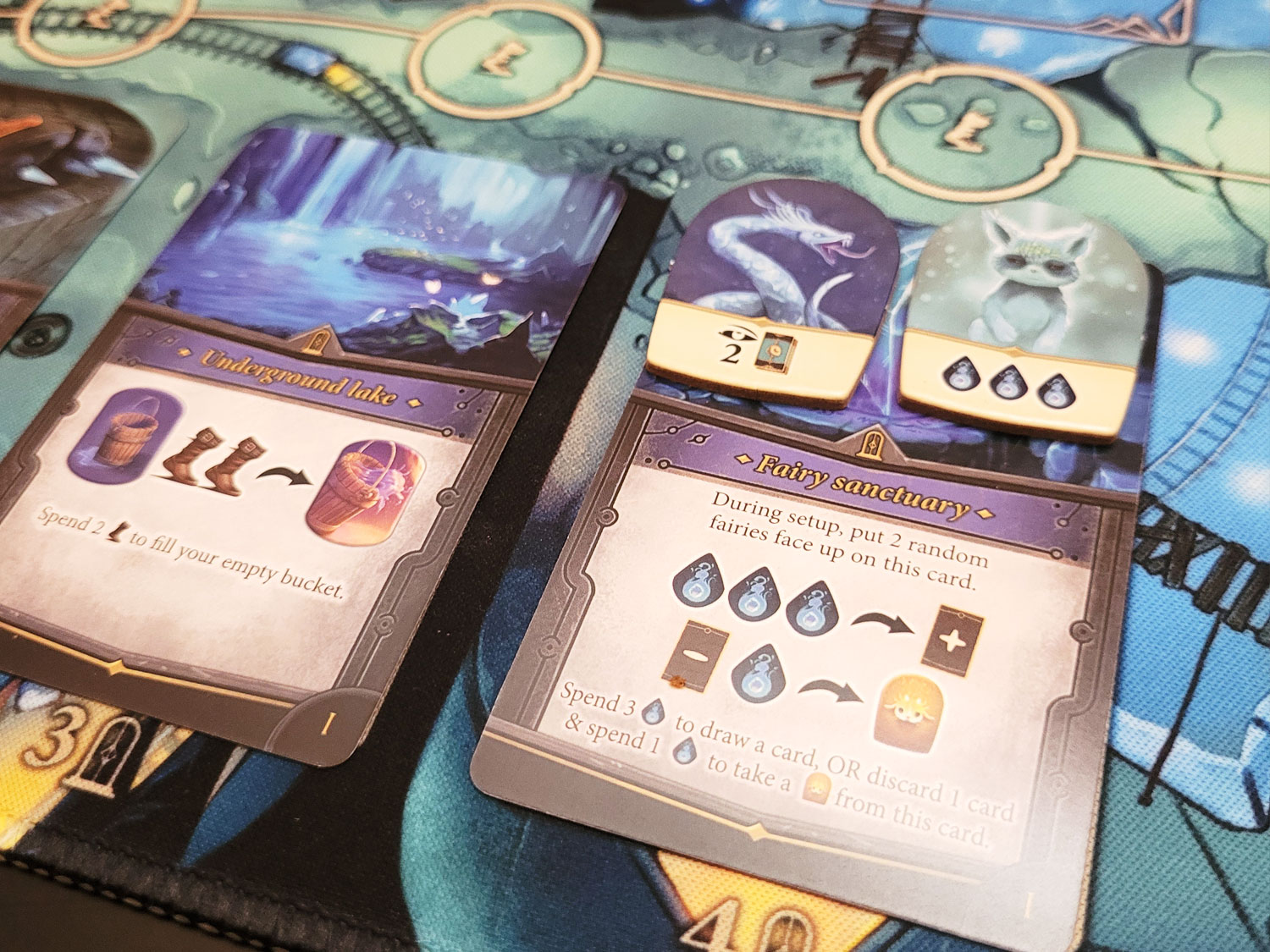
Game Experience:
Whatever the rulebook may tell you, Dungeon Legends is NOT a campaign game. The connective story between chapters is paper-thin, and the mechanical changes for the campaign are almost identical to how you play scenarios on their own. This may not be a negative for people who are tired of campaigns, but you should come into the game knowing it is meant for one-off play.
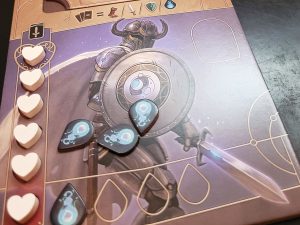
In that niche, though, Dungeon Legends is a lot of fun. Despite its dungeon-crawl appearances, the game is really a mix of tower defense and completing objectives, and those two halves play off each other really well. Players need to kill monsters to avoid losing, and it’s a necessary process to upgrade your deck, but you have to ignore them to some degree to actually win the game. You never feel like you have enough time to both hold off the invading hordes and complete the chapter goals, which leads to fun tradeoffs and tension.
The mechanisms encourage a good amount of cooperation too, thanks to how deck-building is tied to killing monsters. Players will specialize towards certain roles, but everyone needs to kill some monsters to earn those advanced actions, so there is a lot of discussion around who should take on which monsters.
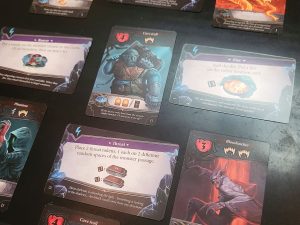
Dungeon Legends also deserves credit for how accessible it is. There are a lot of parts here, but none of them are particularly complex; the card play and deck-building are simple, the monsters can mostly be boiled down to a few basic values, and there are only six locations to consider in any one chapter, which keeps things from being too overwhelming. The five chapters also find a lot of flexibility in that framework. Each chapter feels very different from the others, and the way the locations interact with each other and the rest of the game is always changing. The mechanisms are perhaps too simple and repetitive for “seasoned” gamers to be drawn to, but it’s a perfect weight as an entry-level co-op…
…or it would be, until you look at its rulebook. For such a simple game, the rules are some of the worst I’ve read in a long time, with several important concepts either under-explained or separated into piecemeal chunks of explanation. The actual actions aren’t even explained at all, except for a reference on the last page of the campaign book itself. It’s so bad that I wouldn’t actually recommend it for people new to the hobby, unless they’re being taught by someone else.
Final Thoughts:
Dungeon Legends is an extremely solid family-weight co-op game, and an excellent entry point into board gaming at large. There are a lot of little mechanisms present, but none are overly complicated or confusing, and they all interact in interesting ways. It’s a surprisingly light game without feeling insubstantial, and there is enough replay value amongst its chapters to keep a game group coming back to it again and again. Unfortunately, the rules make it a much harder sell, and the simplicity of the mechanisms makes it less appealing for people used to bad rulebooks.
Final Score: 3.5 Stars–A great entry-level tower defense game with some damaging rules issues.
 Hits:
Hits:
• Gorgeous and thoughtful production
• Fun interactions between tower defense and objectives
• Perfect for less experienced groups…
Misses:
• …Except for the rulebook
• Campaign is light at best
• A bit too simple for more experienced groups
Source: Board Game Quest



